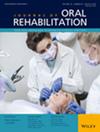A Systematic Review and Meta-Analysis on the Application of Thickened Liquids to Treat Adults With Neurogenic Dysphagia
Abstract
Background
Thickened liquids have been one of the cornerstones of routine care to reduce aspiration for dysphagic patients in clinical practice. However, the evidence of this practice remains limited and uncertain.
Aims
This study aimed to systematically review and evaluate the effects of thickened liquid for adults with neurogenic dysphagia.
Methods
Five electronic databases were searched (Pubmed, Embase via Ovid, CINAHL, Web of Science and Cochrane Library) from each database's inception date until 30th July 2024. Search terms included a combination of database-specific controlled vocabulary terms and free-text terms relating to ‘dysphagia’ and ‘thickened food’. Study inclusion criteria focused on peer-reviewed published articles including randomised controlled trials (RCT), cohort studies, case–control studies and case series. Only studies with neurogenic data were included. Four reviewers independently performed the search, data extraction and analysis. The outcome measure was a change in (any) relevant clinical swallowing-related characteristic.
Results
A total of 2090 studies were identified, of which 16 met the inclusion criteria and were included in the review. The risk of bias of studies was moderate to low. Five studies either focused exclusively on different components of swallowing physiology or were unable to provide sufficient or reliable data for analysis and were thus excluded from data synthesis. Data analysis was conducted between groups (thin liquid vs. thickened liquid) concerning penetration (n = 5) and aspiration (n = 8), Penetration Aspiration Scale (PAS) scores (n = 4), unsafe swallowing (n = 7) and residue (n = 5). The results showed that thickened liquids improved swallowing safety, including reductions in aspiration events (([95% CI] = 0.49 [0.28, 0.88]; p = 0.02; I2 = 81%) in RCTs and ([95% CI] = 0.31 [0.13, 0.71]; p = 0.006; I2 = 47%) in non-RCTs), as well as improvements in unsafe swallowing ([95% CI] = 0.27 [0.14, 0.51]; p < 0.0001; I2 = 88%) and PAS scores ([95% CI] = −1.99 [−2.59, −1.38]; p < 0.00001; I2 = 89%). However, thickened liquids did not demonstrate a significant effect in reducing penetration events ([95% CI] = 0.40 [0.13, 1.22]; p = 0.11; I2 = 88%) and were associated with increased residue in both the pharynx ([95% CI] = 1.57 [1.20, 2.06]; p = 0.001; I2 = 16%) and the oral cavity ([95% CI] = 2.87 [1.88, 4.40]; p < 0.0001; I2 = 45%).
Conclusion
The current evidence, based mainly on non-randomised controlled trials, suggests that thickeners may help improve swallowing safety for neurogenic dysphagia, but this evidence remains weak. Further RCT evidence is needed to validate the clinical efficacy of thickeners.
Trial Registration
INPLASY International Platform for Registered Systematic Reviews and Meta Analyses Program: INPLASY202510011


 求助内容:
求助内容: 应助结果提醒方式:
应助结果提醒方式:


